Lebanon economic recovery postponed
4 June 2024

The visit to Lebanon by the IMF in May reveals a stark picture of an economy now in its fifth year of intense turmoil following its October 2019 exchange rate collapse, and one which now faces significant additional headwinds.
The IMF’s end-of-mission statement identified a lack of action on economic reforms as exerting a heavy economic toll, while flagging negative spillovers from fighting on the country’s southern border as an exacerbating factor for the already dire economic and social situation.
Yet, despite this apparent dismal assessment, Lebanon can legitimately claim to have turned a corner last year.
Implementing monetary and fiscal reforms has seen the phasing out of monetary financing, the termination of the electronic foreign exchange platform, tighter fiscal policy, and steps towards the unification of exchange rates.
These measures have helped contain exchange rate depreciation, stabilise the money supply and reduce inflationary pressure, the IMF said.
Nassib Ghobril, chief economist at Beirut-based Byblos Bank, agrees. “Last year was a very good year for Lebanon, the first year where the economy was on track to post a positive growth rate since 2017,” he says.
After the first nine months of 2023, Ghobril’s forecast for real GDP growth was 2%, driven by stellar tourism activity that so far that year had produced knock-on benefits for 14 sub-sectors, in addition to improved activity in the wider industrial, agricultural and services sectors.
“And then 7 October and 8 October happened, and that created a shock that put a hold on this momentum — and that’s continuing,” he says.
Contingent growth
Lebanon’s economic outlook now hinges largely on the outcome of the conflict in Gaza and the related violence between Hezbollah and the Israeli Defence Forces, which has forced widespread displacement of the southern population, besides disrupting agriculture and tourism.
Looking ahead, Ghobril predicts a continuation of the current status quo, which would result in a real GDP contraction of 0.5-1% in 2024, at 40% probability. If the conflict expands – also a 40% probability – then it could realise a more serious contraction of 15-20%.
On the other hand, says Ghobril, in a ceasefire scenario, which he puts at 20% probability, “the sooner it happens, we would have a rebound in growth based on the positive shock, the reconstruction of the south and better visibility”.
Tourism revival, important to Lebanon as a hard currency generator, is highly contingent on a stable security situation, even beyond the southern areas most impacted by the fighting.
Minister of Economy and Trade Amin Salam warned in February that it was unclear if visitors from the Lebanese diaspora and elsewhere, who injected about $5-7bn into the economy last summer, would come to the country this season. In Q1 2024, total passenger numbers at Beirut International airport decreased by 6.7% in year-on-year terms to 1.27 million, according to Banque Audi figures.
The conflict’s direct impact on the south has been stark. According to Banque Audi, more than 6,000 acres of forest and agricultural land have been damaged, up to 2,100 acres completely burned, and more than 60,000 olive trees destroyed.
Meanwhile, an estimated 93,000 people have been internally displaced, contributing to an estimated 75% decline in economic activity in the south. The sense that the Israel-Hamas war has stunted Lebanon’s recovery is hard to avoid, rolling back the progress seen in 2023.
Fiscal stabilisation
The IMF has nevertheless lauded the government’s measures to boost revenue collection from VAT and customs, which it said helped close the fiscal deficit to zero last year.
“Looking ahead, we anticipate the fiscal balance to remain close to zero in 2024, on limited financing options and improved revenue collection permitted by the exchange rate adjustment on custom duties and VAT. CPI inflation is expected to stabilise on lower unsterilised interventions of Banque du Liban,” says Thomas Garreau, an analyst at Fitch Ratings.
Balancing current spending looked to be within reach. The government’s budgeted figures for 2024 envisage public spending amounting to $3.4bn, matched by public revenues of $3.4bn, despite an increase in public sector wages of $40m a month.
Exchange rate stabilisation is a clear win for Lebanon. The pound has been stable at £Leb89,500 to the dollar since the end of July 2023 despite multiple security incidents not related to the conflict in the south of the country.
“That’s still ongoing because the central bank managed last year to sterilise liquidity and Lebanese pounds from the market to reduce the differential between the quasi-official exchange rate of the central bank and the parallel market rate, and to stop the speculation on the currency. So it managed to stop the depreciation of the currency,” says Ghobril.
Foreign exchange reserves, which eroded heavily in the post-2019 crisis period, appear to have steadied. The liquid foreign assets of the central Banque du Liban grew by $382m in Q1 2014, reaching $9.6bn.
As Banque Audi notes, the cumulative growth of $1bn in the central bank’s liquid foreign assets since the end of July 2023 is mostly linked to its refraining from any government finance.
Yet the more lasting changes needed to shift the dial on Lebanon’s economic narrative remain elusive.
Bank deposits are frozen, notes the IMF, and the banking sector is unable to provide credit to the economy, as the government and parliament have been unable to find a solution to the sector’s crisis.
Addressing the banks’ losses while protecting depositors is seen as indispensable to economic recovery.
It does not help that the country has been without a president since October 2022, leaving caretaker Prime Minister Najib Mikati without a full mandate to undertake reforms.
This matters because banking system recovery hinges on political will to implement reforms. Yet the vacuum at the presidential palace leaves little prospect of imminent progress on this front.
“Despite some politicians’ comments, I do not see prospects of an end to the political deadlock as long as the war is ongoing in the south. And even if it suddenly stopped, you would need several months for an overall settlement to materialise on the domestic political front,” says Ghobirl.
The present situation leaves Lebanon politically and economically hobbled, with fears of worse to come due to external events beyond its control.
Exclusive from Meed
-
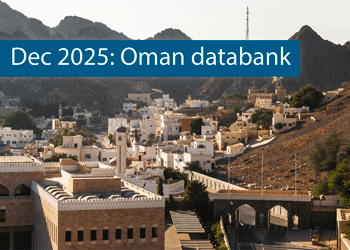 Oman’s growth forecast points upwards
Oman’s growth forecast points upwards24 December 2025
-
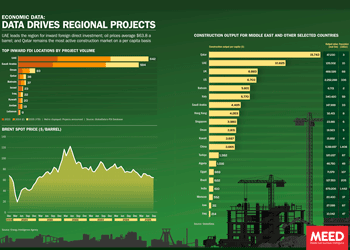 December 2025: Data drives regional projects
December 2025: Data drives regional projects23 December 2025
-
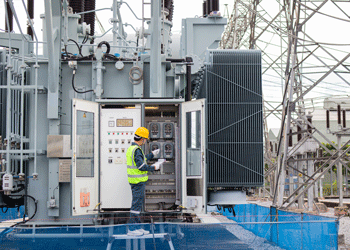 Local firm bids lowest for Kuwait substation deal
Local firm bids lowest for Kuwait substation deal22 December 2025
-
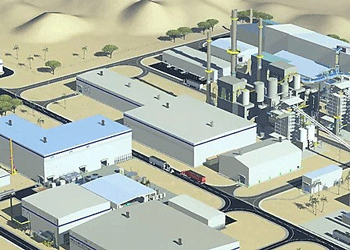 Saudi-Dutch JV awards ‘supercentre’ metals reclamation project
Saudi-Dutch JV awards ‘supercentre’ metals reclamation project22 December 2025
-
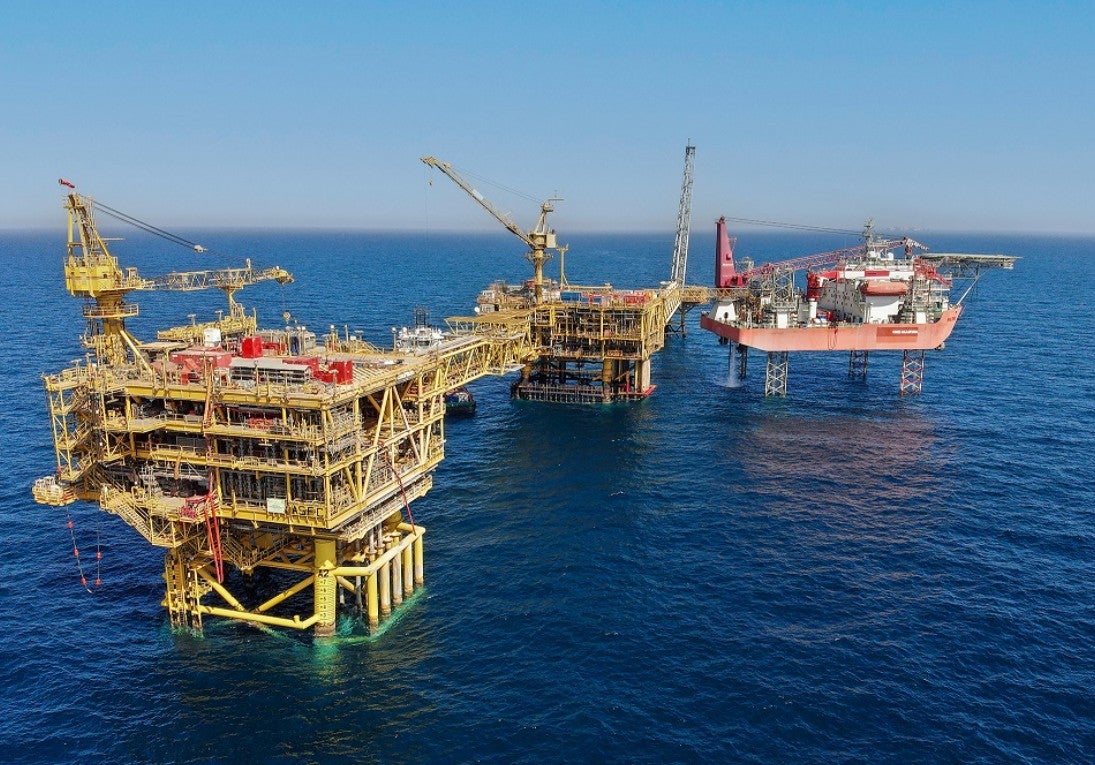 QatarEnergy LNG awards $4bn gas project package
QatarEnergy LNG awards $4bn gas project package22 December 2025
All of this is only 1% of what MEED.com has to offer
Subscribe now and unlock all the 153,671 articles on MEED.com
- All the latest news, data, and market intelligence across MENA at your fingerprints
- First-hand updates and inside information on projects, clients and competitors that matter to you
- 20 years' archive of information, data, and news for you to access at your convenience
- Strategize to succeed and minimise risks with timely analysis of current and future market trends

Related Articles
-
 Oman’s growth forecast points upwards
Oman’s growth forecast points upwards24 December 2025

MEED’s January 2026 report on Oman includes:
> COMMENT: Oman steadies growth with strategic restraint
> GVT & ECONOMY: Oman pursues diversification amid regional concerns
> BANKING: Oman banks feel impact of stronger economy
> OIL & GAS: LNG goals galvanise Oman’s oil and gas sector
> POWER & WATER: Oman prepares for a wave of IPP awards
> CONSTRUCTION: Momentum builds in construction sectorTo see previous issues of MEED Business Review, please click herehttps://image.digitalinsightresearch.in/uploads/NewsArticle/15306449/main.gif -
 December 2025: Data drives regional projects
December 2025: Data drives regional projects23 December 2025
Click here to download the PDF
Includes: Top inward FDI locations by project volume | Brent spot price | Construction output
MEED’s January 2026 report on Oman includes:
> COMMENT: Oman steadies growth with strategic restraint
> ECONOMY: Oman pursues diversification amid regional concerns
> BANKING: Oman banks feel impact of stronger economy
> OIL & GAS: LNG goals galvanise Oman’s oil and gas sector
> POWER & WATER: Oman prepares for a wave of IPP awards
> CONSTRUCTION: Momentum builds in construction sectorTo see previous issues of MEED Business Review, please click herehttps://image.digitalinsightresearch.in/uploads/NewsArticle/15306140/main.gif -
 Local firm bids lowest for Kuwait substation deal
Local firm bids lowest for Kuwait substation deal22 December 2025
The local Al-Ahleia Switchgear Company has submitted the lowest price of KD33.9m ($110.3m) for a contract to build a 400/132/11 kV substation at the South Surra township for Kuwait’s Public Authority for Housing Welfare (PAHW).
The bid was marginally lower than the two other offers of KD35.1m and KD35.5m submitted respectively by Saudi Arabia’s National Contracting Company (NCC) and India’s Larsen & Toubro.
PAHW is expected to take about three months to evaluate the prices before selecting the successful contractor.
The project is one of several transmission and distribution projects either out to bid or recently awarded by Kuwait’s main affordable housing client.
This year alone, it has awarded two contracts worth more than $100m for cable works at its 1Z, 2Z, 3Z and 4Z 400kV substations at Al-Istiqlal City, and two deals totalling just under $280m for the construction of seven 132/11kV substations in the same township.
Most recently, it has tendered two contracts to build seven 132/11kV main substations at its affordable housing project, west of Kuwait City. The bid deadline for the two deals covering the MS-01 through to MS-08 substations is 8 January.
https://image.digitalinsightresearch.in/uploads/NewsArticle/15305745/main.gif -
 Saudi-Dutch JV awards ‘supercentre’ metals reclamation project
Saudi-Dutch JV awards ‘supercentre’ metals reclamation project22 December 2025
The local Advanced Circular Materials Company (ACMC), a joint venture of the Netherlands-based Shell & AMG Recycling BV (SARBV) and local firm United Company for Industry (UCI), has awarded the engineering, procurement and construction (EPC) contract for the first phase of its $500m-plus metals reclamation complex in Jubail.
The contract, estimated to be worth in excess of $200m, was won by China TianChen Engineering Corporation (TCC), a subsidiary of China National Chemical Engineering Company (CNCEC), following the issue of the tender in July 2024.
Under the terms of the deal, TCC will process gasification ash generated at Saudi Aramco’s Jizan refining complex on the Red Sea coast to produce battery-grade vanadium oxide and vanadium electrolyte for vanadium redox flow batteries. AMG will provide the licensed technology required for the production process.
The works are the first of four planned phases at the catalyst and gasification ash recycling ‘Supercentre’, which is located at the PlasChem Park in Jubail Industrial City 2 alongside the Sadara integrated refining and petrochemical complex.
Phase 2 will expand the facility to process spent catalysts from heavy oil upgrading facilities to produce ferrovanadium for the steel industry and/or additional battery-grade vanadium oxide.
Phase 3 involves installing a manufacturing facility for residue-upgrading catalysts.
In the fourth phase, a vanadium electrolyte production plant will be developed.
The developers expect a total reduction of 3.6 million metric tonnes of carbon dioxide emissions a year when the four phases of the project are commissioned.
SARBV first announced its intention to build a metal reclamation and catalyst manufacturing facility in Saudi Arabia in November 2019. The kingdom’s Ministry of Investment, then known as the Saudi Arabian General Investment Authority (Sagia), supported the project.
In July 2022, SARBV and UCI signed the agreement to formalise their joint venture and build the proposed facility.
The project has received support from Saudi Aramco’s Namaat industrial investment programme. Aramco, at the time, also signed an agreement with the joint venture to offtake vanadium-bearing gasification ash from its Jizan refining complex.
Photo credit: SARBV
https://image.digitalinsightresearch.in/uploads/NewsArticle/15305326/main.gif -
 QatarEnergy LNG awards $4bn gas project package
QatarEnergy LNG awards $4bn gas project package22 December 2025
QatarEnergy LNG, a subsidiary of state-owned QatarEnergy, has awarded the main engineering, procurement, construction and installation (EPCI) contract for a major package for the second phase of its North Field Production Sustainability (NFPS) project.A consortium comprising the Italian contractor Saipem and state-owned China Offshore Oil Engineering Company (COOEC) has secured the EPCI contract for the COMP5 package. The contract value is $4bn, with Saipem declaring its share to be worth $3.1bn.
Milan-headquartered Saipem said the contract will run for about five years. The scope of work comprises engineering, procurement, fabrication and installation of two compression complexes, each including a compression platform, a living quarters platform, a flare platform supporting the gas combustion system, and the related interconnecting bridges. Each complex will have a total weight of about 68,000 tonnes.
Offshore installation operations will be carried out by Saipem’s De He construction vessel in 2029 and 2030.
MEED previously reported that the following contractors submitted bids for the NFPS phase two COMP5 package:
- Larsen & Toubro Energy Hydrocarbon (India)
- McDermott (US)
- Saipem/China Offshore Oil Engineering Company (Italy/China)
QatarEnergy LNG, formerly Qatargas, is said to have issued the tender for the NFPS phase two COMP5 package in the first quarter of the year.
Contractors submitted technical bids for the COMP5 package in late June, while commercial bids were submitted by 8 October, as per sources.
Based upon initial evaluation of bids by QatarEnergy LNG, L&TEH has emerged as the lowest bidder for the COMP5 package, followed by McDermott, with the consortium of Saipem and COOEC in third place, MEED reported in late October.
In the weeks following that, the project operator is said to have engaged all bidders for a final round of negotiations, during which the consortium of Saipem and COOEC is believed to have “clinched the deal”, according to sources.
The detailed scope of work on the COMP5 package covers the EPCI work on the following:
- Two gas compression platforms, each weighing 30,000-35,000 tonnes, plus jacket
- Two living quarters platforms, plus jacket
- Two gas flare platforms, plus jacket
- Brownfield modification work at two complexes
NFPS scheme
QatarEnergy’s North Field liquefied natural gas (LNG) expansion programme requires the state enterprise to pump large volumes of gas from the North Field offshore reserve to feed the three phases of the estimated $40bn-plus programme.
QatarEnergy has already invested billions of dollars in engineering, procurement and construction works on the two phases of the NFPS project, which aims to maintain steady gas feedstock for the North Field LNG expansion phases.
The second NFPS phase will mainly involve building gas compression facilities to sustain and gradually increase gas production from Qatar’s offshore North Field gas reserve over the long term.
Saipem has been the most successful contractor on the second NFPS phase, securing work worth a total of $8.5bn.
QatarEnergy LNG awarded Saipem a $4.5bn order in October 2022 to build and install gas compression facilities. The main scope of work on the package, which is known as EPCI 2, covers two large gas compression complexes that will comprise decks, jackets, topsides, interconnecting bridges, flare platforms, living quarters and interface modules.
The gas compression complexes – CP65 and CP75 – will weigh 62,000 tonnes and 63,000 tonnes, respectively, and will be the largest fixed steel jacket compression platforms ever built.
Following that, Saipem won combined packages COMP3A and COMP3B of the NFPS project’s second phase in September last year.
The scope of work on the combined packages encompasses the EPCI of a total of six platforms, approximately 100 kilometres (km) of corrosion resistance alloy rigid subsea pipelines of 28-inches and 24-inches diameter, 100km of subsea composite cables, 150km of fibre optic cables and several other subsea units.
Separately, QatarEnergy LNG awarded McDermott the contract for the NFPS second phase package known as EPCI 1, or COMP1, in July 2023. The scope of work on the estimated $1bn-plus contract is to install a subsea gas pipeline network at the North Field gas development.
In March this year, India’s Larsen & Toubro Energy Hydrocarbon (LTEH) won the main contract for the combined 4A and 4B package, which is the fourth package of the second phase of the NFPS project and is estimated to be valued at $4bn-$5bn.
The main scope of work on the package is the EPCI of two large gas compression systems that will be known as CP8S and CP4N, each weighing 25,000-35,000 tonnes. The contract scope also includes compression platforms, flare gas platforms and other associated structures.
LTHE sub-contracted detailed engineering and design works on the combined 4A and 4B package to French contractor Technip Energies.
NFPS first phase
Saipem is also executing the EPCI works on the entire first phase of the NFPS project, which consists of two main packages.
Through the first phase of the NFPS scheme, QatarEnergy LNG aims to increase the early gas field production capacity of the North Field offshore development to 110 million tonnes a year.
QatarEnergy LNG awarded Saipem the contract for the EPCI package in February 2021. The package is the larger of the two NFPS phase one packages and has a value of $1.7bn.
Saipem’s scope of work on the EPCI package encompasses building several offshore facilities for extracting and transporting natural gas, including platforms, supporting and connecting structures, subsea cables and anti-corrosion internally clad pipelines.
The scope of work also includes decommissioning a pipeline and other significant modifications to existing offshore facilities.
In addition, in April 2021, QatarEnergy LNG awarded Saipem two options for additional work within the EPCI package, worth about $350m.
QatarEnergy LNG awarded Saipem the second package of the NFPS phase one project, estimated to be worth $1bn, in March 2021.
Saipem’s scope of work on the package, which is known as EPCL, mainly covers installing three offshore export trunklines running almost 300km from their respective offshore platforms to the QatarEnergy LNG north and south plants located in Ras Laffan Industrial City.
Saipem performed the front-end engineering and design work on the main production package of the first phase of the NFPS as part of a $20m contract that it was awarded in January 2019. This provided a competitive advantage to the Italian contractor in its bid to win the package.
https://image.digitalinsightresearch.in/uploads/NewsArticle/15305330/main2239.jpg

